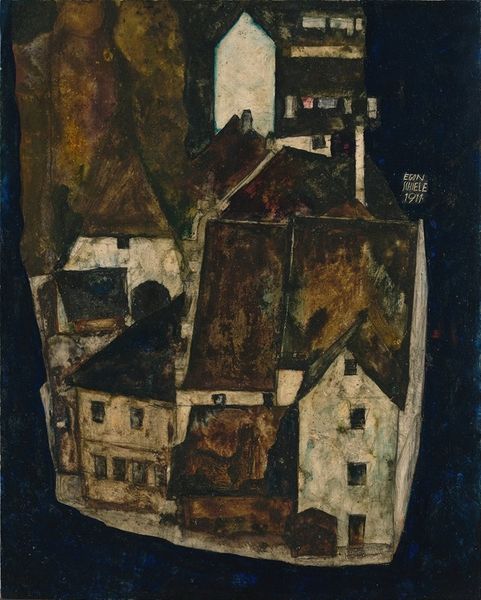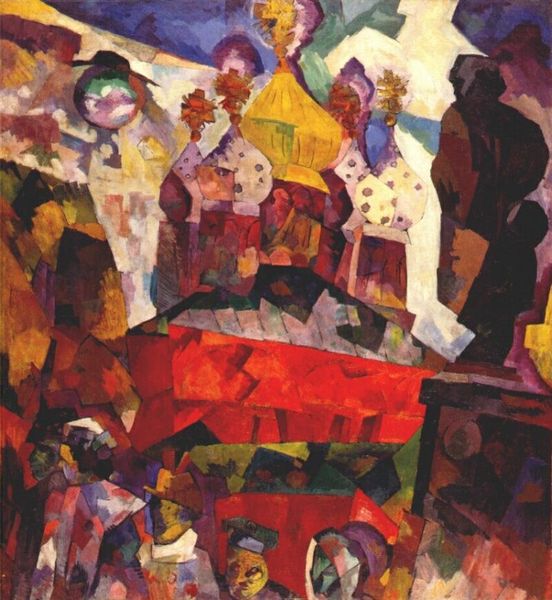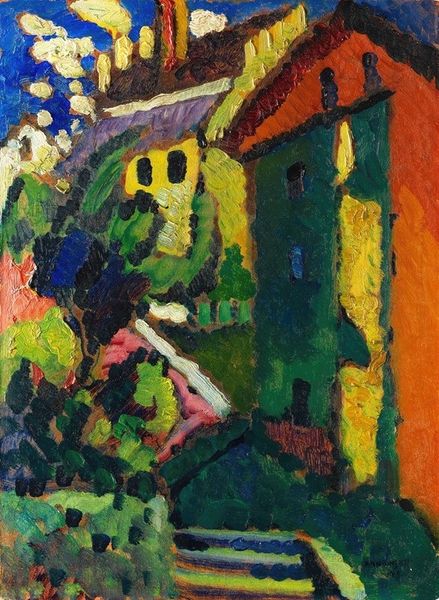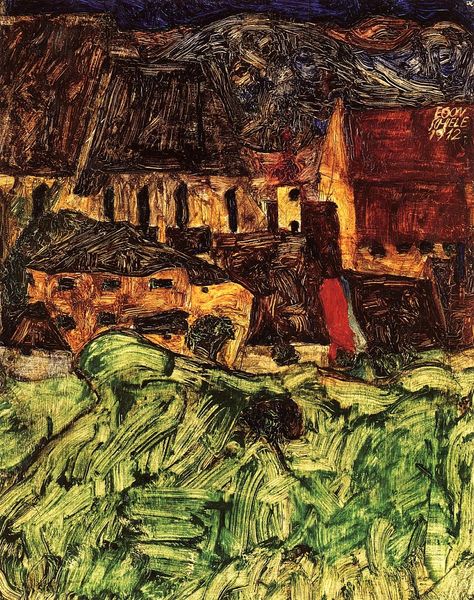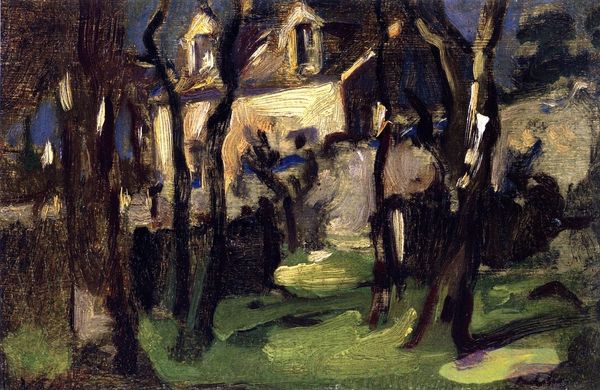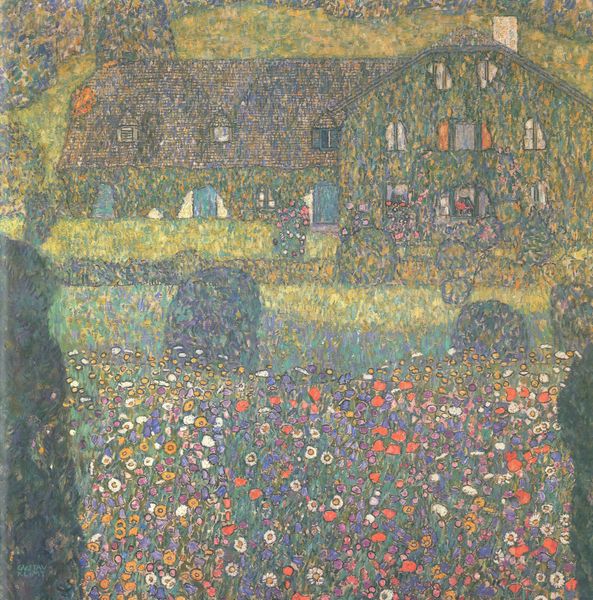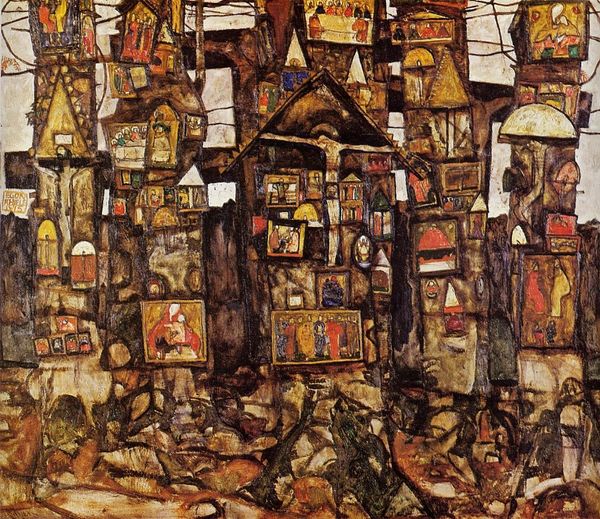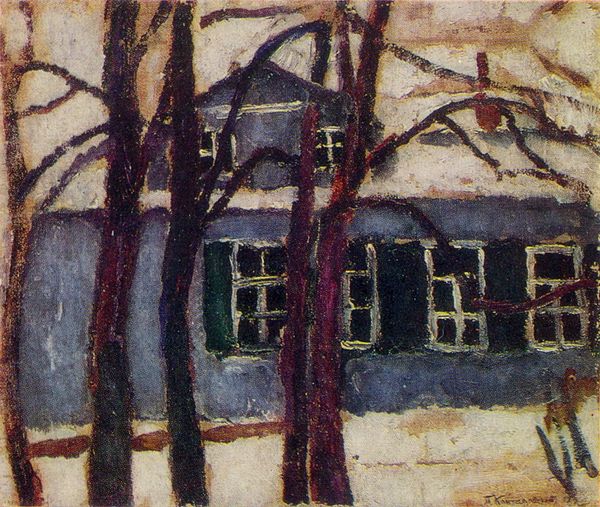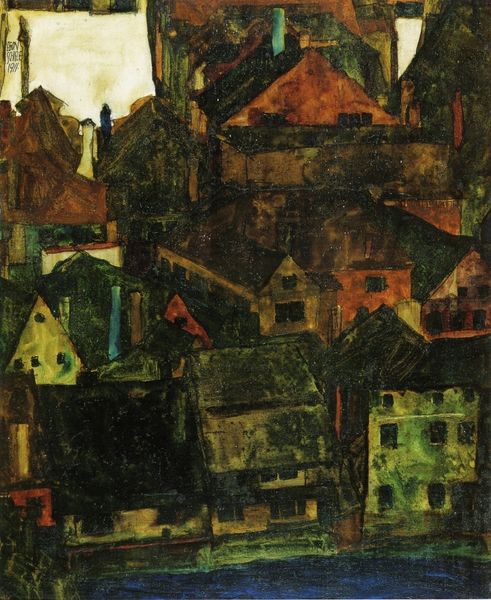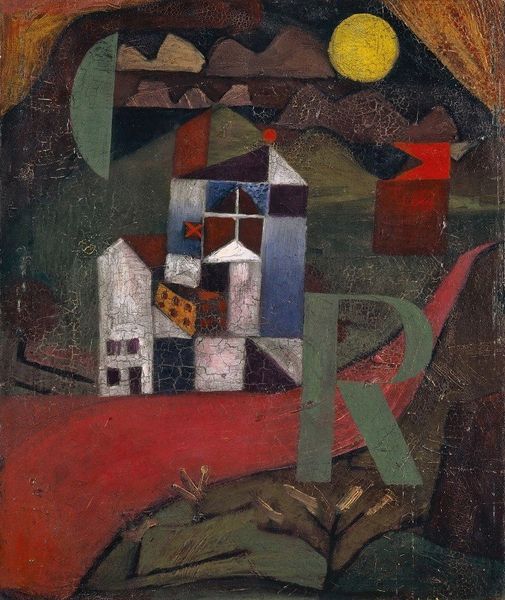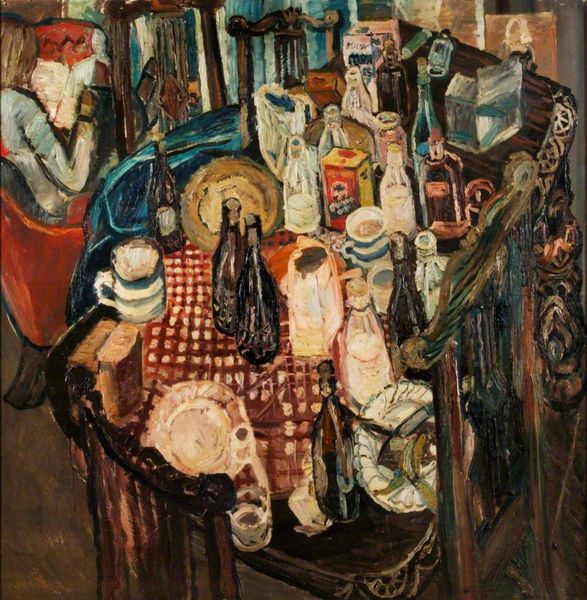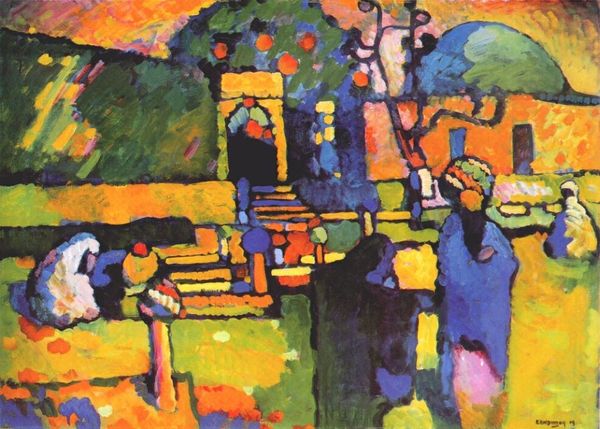
painting, oil-paint
#
painting
#
oil-paint
#
landscape
#
house
#
painted
#
form
#
geometric
#
expressionism
#
cityscape
#
building
Dimensions: 80 x 80 cm
Copyright: Public domain
Curator: Egon Schiele’s "The Small City (Dead City)," created in 1912 with oil paint, presents a compelling, if bleak, view. What’s your immediate take on it? Editor: Stark. Melancholy. The heavy use of dark browns and blacks definitely conveys a feeling of decay, of something once vibrant now past its prime. Curator: Schiele’s brushstrokes themselves seem to contribute to this effect, don’t they? Observe how the texture of the oil paint—rough and almost sculpted—mimics the crumbling facades of the buildings. I’m interested in what this reveals about labor and construction at the time, the tension between making and unmaking. Editor: It’s intriguing how he uses the geometric forms of the buildings, especially the sharp angles of the roofs, against the swirling darkness. The geometric shapes of the houses almost feel like faces staring blankly, conveying a sense of abandonment, maybe even lost identity. Curator: The limited color palette forces us to consider the materials themselves, where they came from, and the processes used to transform them. Pigments have stories too, stories that speak to industry and the socio-economic landscape of the time. Editor: Absolutely. But it's not just the literal depiction. The small green and yellow windows offer a glimpse of warmth, perhaps hinting at the memory of life within those decaying walls. These flickers of colour serve as potent symbols against the oppressive dark ground. Curator: The ground indeed has the look of densely worked earth, where Schiele has created that sensation of mass, maybe a comment on the materials from which even cities must be built, a challenge to their ambitions. Editor: It makes you wonder what Schiele wanted us to remember through this image— the transience of human construction perhaps, the vulnerability hidden beneath the symbols of progress? Curator: Perhaps. Looking closely, this artwork speaks to our human need for making marks, and reminds us of the cycles of creation and ruin intrinsic to existence. Editor: Yes, cycles echoed even in the silent symbolic language that emerges from a landscape painting like this.
Comments
No comments
Be the first to comment and join the conversation on the ultimate creative platform.
